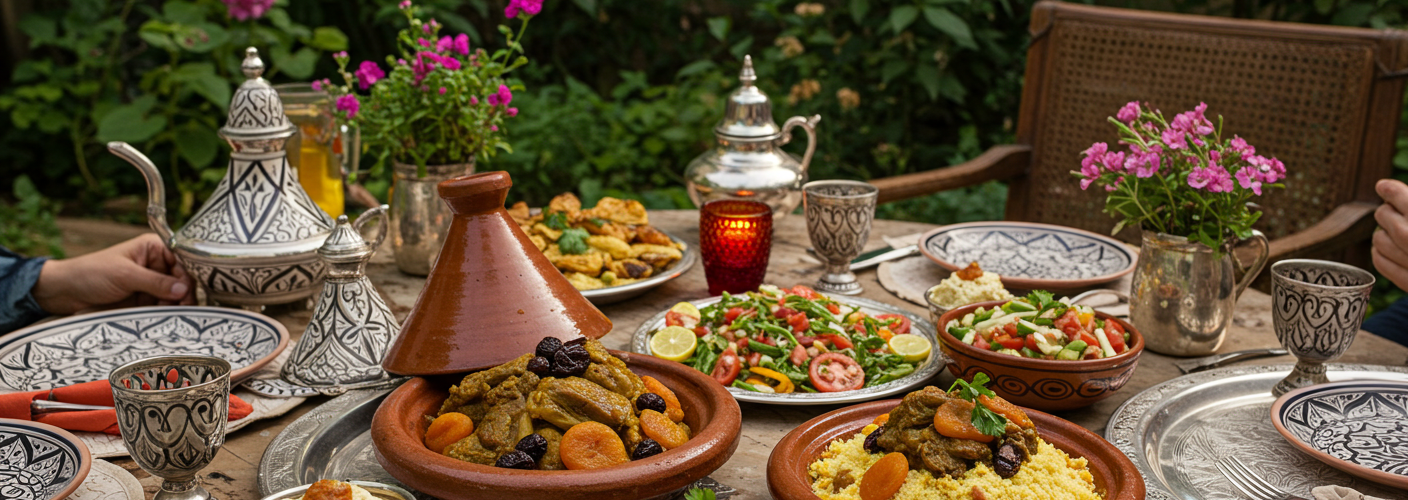Moroccan food is a vibrant tapestry woven from the influences of various cultures, climates, and traditions that have shaped the country over centuries. Nestled at the crossroads of Europe, Africa, and the Middle East, Morocco’s culinary landscape reflects a harmonious blend of flavors, aromas, and colors, making it a delight for food enthusiasts around the world.
At the heart of Moroccan cuisine is the famous tagine, a slow-cooked stew named after the earthenware pot in which it is prepared. Tagine dishes can feature an eclectic mix of ingredients, including tender meats like lamb, chicken, or beef, complemented by a variety of vegetables and aromatic spices. Spices such as cumin, coriander, cinnamon, and saffron are staples in Moroccan kitchens, adding depth and warmth to each dish. The combination of sweet and savory flavors is quintessentially Moroccan, often incorporating dried fruits like apricots or prunes, along with a hint of honey.
Another iconic element of Moroccan food culture is couscous, a staple grain made from semolina. Traditionally served with a hearty stew, couscous can also be enjoyed in salads or as a side dish. It is often accompanied by vegetables and a generous portion of sauce, making it a filling and satisfying meal. The ritual of serving couscous is significant in Moroccan households, typically reserved for gatherings or special occasions, where it brings family and friends together.
Moroccan meals are often accompanied by fresh bread, known as khobz, which holds great importance in the dining experience. Bread is used as a utensil to scoop up food, reinforcing the communal aspect of Moroccan culture. Sharing a meal is seen not just as a necessity but as an essential part of socializing, fostering relationships, and celebrating life’s moments.
Street food is another vibrant facet of Morocco’s culinary scene. Bustling markets and food stalls offer an array of tantalizing snacks, including spicy merguez sausages, crispy briouats (savory pastries), and harira, a hearty soup that is especially popular during Ramadan. Visitors can enjoy the kaleidoscope of flavors while witnessing the lively atmosphere, as vendors skillfully prepare their dishes right before their eyes.
Moroccan tea, often referred to as “Moroccan whisky,” is a cherished tradition that embodies hospitality and connection. Made from green tea, mint leaves, and sugar, the tea is poured from a height into small glasses, creating a refreshing drink that is enjoyed throughout the day. The art of making and serving tea is a ritual in itself, signifying respect and friendship among hosts and guests alike.
Moroccan desserts are a sweet culmination of the dining experience, where pastries like baklava and kaab el ghazal (gazelle horns) entice the senses with their buttery layers and fragrant fillings. Made with almonds, orange blossom water, and spices, these treats reflect the country’s affinity for sweetness.
In essence, Moroccan food is more than just sustenance; it is a celebration of history, community, and culture. By embracing the spices, flavors, and traditions that characterize Moroccan cuisine, one embarks on a flavorful journey that transcends geographical boundaries and invites everyone to savor the joy of sharing a meal together. Whether it’s in a bustling market in Marrakech or a cozy home in Fes, Moroccan cuisine offers a delicious exploration of the country’s rich heritage.




Add comment